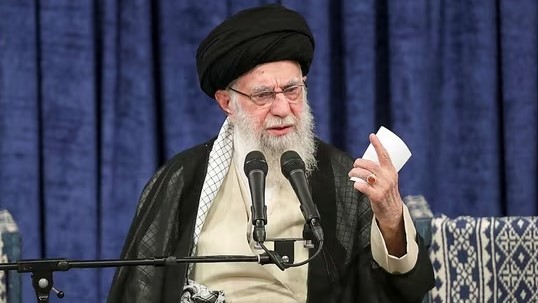Iran has taken a bold step once again, drawing attention across the globe. Despite growing tension in the Middle East, threats from Israel, and warnings from the United States, Iran recently tested a satellite launch rocket named ‘Qased’. This test took place just after a 12-day military operation carried out by Israel.
Qased Rocket Test After 12 Days of Conflict
The launch of Qased was reported by Mehr, Iran’s official news agency, and was described as a key achievement in Iran’s space research program. The report stated that the test was conducted to try out new technologies and to boost the country’s satellite launch capabilities.
However, global defense experts are raising concerns. While Iran officially calls this a space launch, the technology behind Qased is deeply connected with ballistic missile systems. This has created a new wave of tension among Western countries, especially Israel and the United States, who see this as a step toward military strength, not just peaceful space exploration.
Qased is a hybrid rocket, which means it uses a combination of solid and liquid fuel. This fuel mix is commonly found in military missile systems. According to a detailed report by the Institute for the Study of War, rockets like Qased have the technical features that could allow them to be turned into ICBMs (Intercontinental Ballistic Missiles) in the future.
Pentagon confirms Iranian missile hit key US base in Qatar — geodesic dome destroyed
Technology Behind Qased Raises Red Flags
This latest launch by Iran is not just about sending a satellite into space. In fact, this time, no satellite was onboard. The purpose of the launch was to test improvements in the rocket’s design and systems. Iran’s state media IRNA confirmed that the trial aimed to examine new technology that could make their space systems more advanced.
Experts believe that these technologies—used to improve missile accuracy, control, and guidance—could be used in both space and military projects. Similar claims have also appeared in a report by Breaking Defense, where it was stated that rockets like Qased can be easily adapted for long-range missile systems.
This has led to fears that Iran might be developing weapons in the guise of peaceful space missions. In the past, several Western countries have already accused Iran of hiding its missile development programs behind space research.
The reaction from the United States has been strong. Republican Senator Tom Cotton called the launch “misleading” and accused Iran of using its space program to distract from its real goal—military missile development.
Adding to the concern, former U.S. President Donald Trump issued a serious warning. In a recent social media post, he said that if necessary, the United States would strike Iran’s nuclear sites again. His comment came after Iran’s foreign minister made claims that past U.S. attacks had already damaged key uranium facilities. Trump responded, “Yes – I did that. And if necessary, I would do it again.”
Tension in the Middle East Grows With Every Launch
Iran’s latest move comes at a time when the Middle East is facing rising instability. From recent conflicts involving Israel to ongoing issues in Gaza and Syria, the region is already on edge. Iran’s rocket test has only added more pressure to an already fragile situation.
Despite this, Iran appears undeterred. Right after Israel’s 12-day military operation, Tehran went ahead with the Qased test. This action shows Iran’s intent to continue building and testing new technologies, regardless of international opinion or monitoring.
Iran’s space agency stated that this launch was aimed at improving satellite systems. However, many experts remain skeptical. According to global defense analysts, every successful test of Qased also signals progress in missile development capabilities, even if a satellite is not launched.
Trump Declares Middle East Peace, But Iran’s Missiles Rain Down Moments Later
This is not the first time Iran has used Qased. The rocket’s first successful test was in 2020, when it placed a military satellite into orbit. That test had already triggered alarms among global powers, and this latest test has once again drawn sharp attention.
As Iran moves forward with such projects, tensions with Western countries like the United States and Israel continue to rise. With every test of the Qased rocket, the fine line between peaceful space technology and military missile advancement becomes harder to define.
This time, Iran didn’t just launch a rocket—it sent a loud and clear message. And the world is watching closely.

